Spring Orchids in the Kent Downs
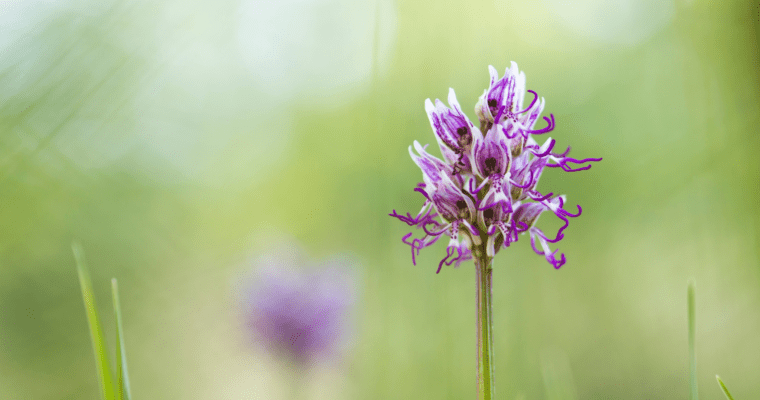
22nd April 2024
Orchids are some of the most impressive wildflower species found in the UK, with their distinctive flowers making them easy to spot. There are around 52 different species in Britain, and around 25 of these can be found in the Kent Downs National Landscape. This designated Area of Outstanding Natural Beauty is the only place in Britain where wild orchids such as the late spider orchid and lady orchid can be found. In fact, it’s the iconic chalky grassland, that’s low in nutrients, combined with our warm climate that makes the Kent Downs one of the best regions in the country for orchids (hence why our logo is an orchid!).
So, if you fancy a spot of wild orchid-hunting this spring, here’s our top five spring orchids in the Kent Downs to look out for during April and May:
Early spider-orchid
The early spider orchid is native to Europe and the Mediterranean region. This rare orchid is found mainly on the south coast in the UK, preferring chalk grassland – a key feature of the Kent Downs! The early spider orchid is known for its distinctive flowers, which resemble a spider, hence the name. These orchids typically bloom in early spring, giving the ‘early’ to their name. They are characterised by their intricate patterns and colours, mimicking the appearance of female insects to attract male pollinators.
Samphire Hoe Nature Reserve, located just outside of Dover, is one of the top spots in the country to see early spider orchids, having successfully colonised the chalk spoil excavated during the creation of the Channel Tunnel.

Early purple orchid
The early purple orchid has a much wider range and is widespread through Europe, North Africa, and western Asia, and is common in the UK. As the name suggests, the early purple orchid is one of the earliest flowering orchids in Kent, appearing from April to June. Look for this orchid in open woodlands, meadows, roadsides, and grasslands, where it plays a role in local ecosystems as a food source for pollinators. The early purple orchid has striking purple flowers, which typically appear in dense spikes, and distinctive leaves with purple-black spots. Park Gate Down reserve near Elham and Devil’s Kneading Trough in Wye are good places to look for early purple orchids.
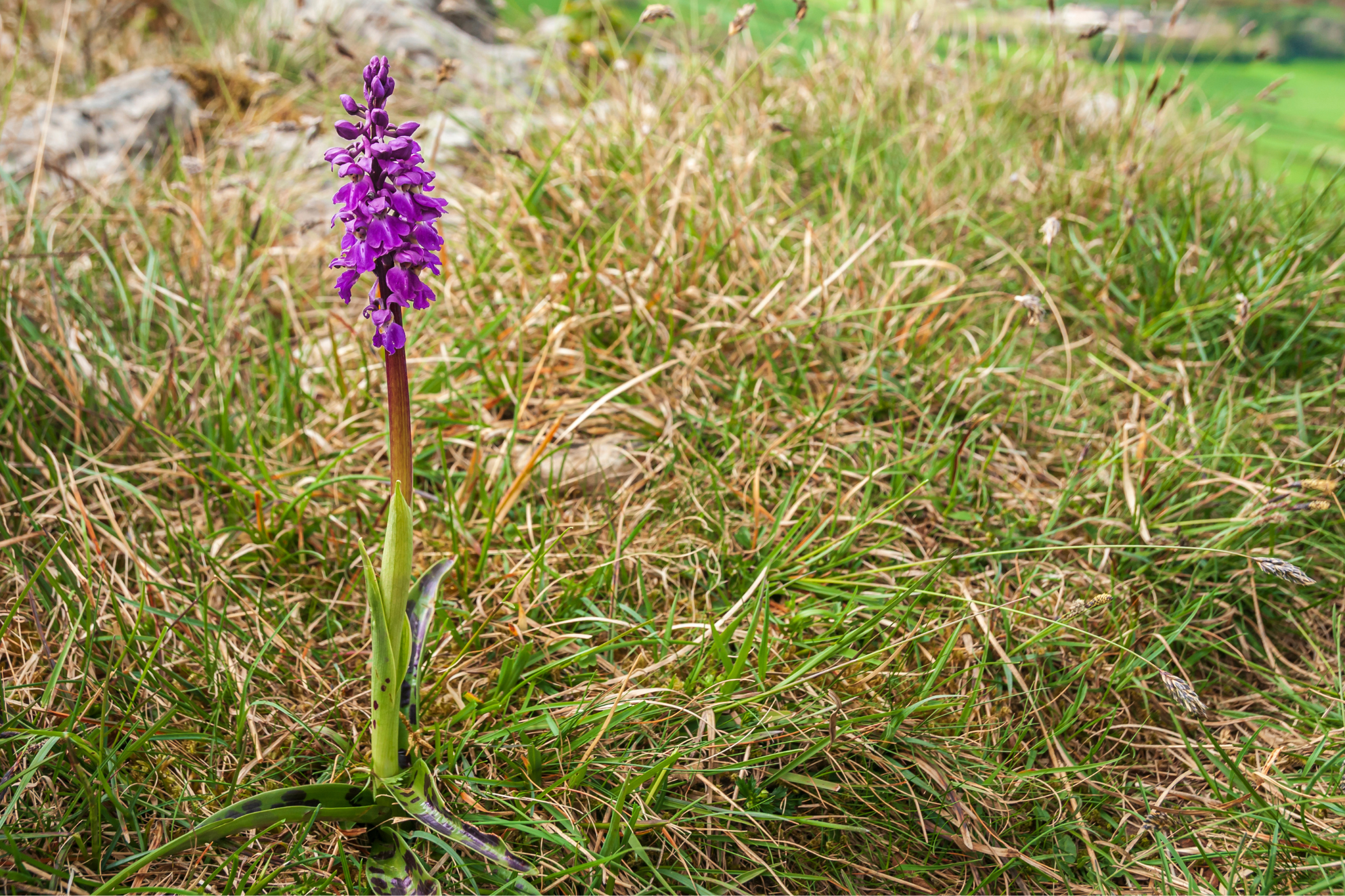
Lady orchid
The distinctive lady orchid is one of the UK’s rarest orchids, now found in only a few sites in southern England, including the Kent Downs. It’s much more common on the Continent, with populations found as far north as Denmark down to Northern Africa. The lady orchid is easily identified as the lobes on the flower resemble the arms and skirt of a woman, hence the name! Lady orchids prefer calcareous soils and it’s most often found in woodland clearings in the UK. One of the best places to look for the lady orchid is Bonsai Bank, a flower-rich area of chalk grassland in Denge Wood, near Canterbury.
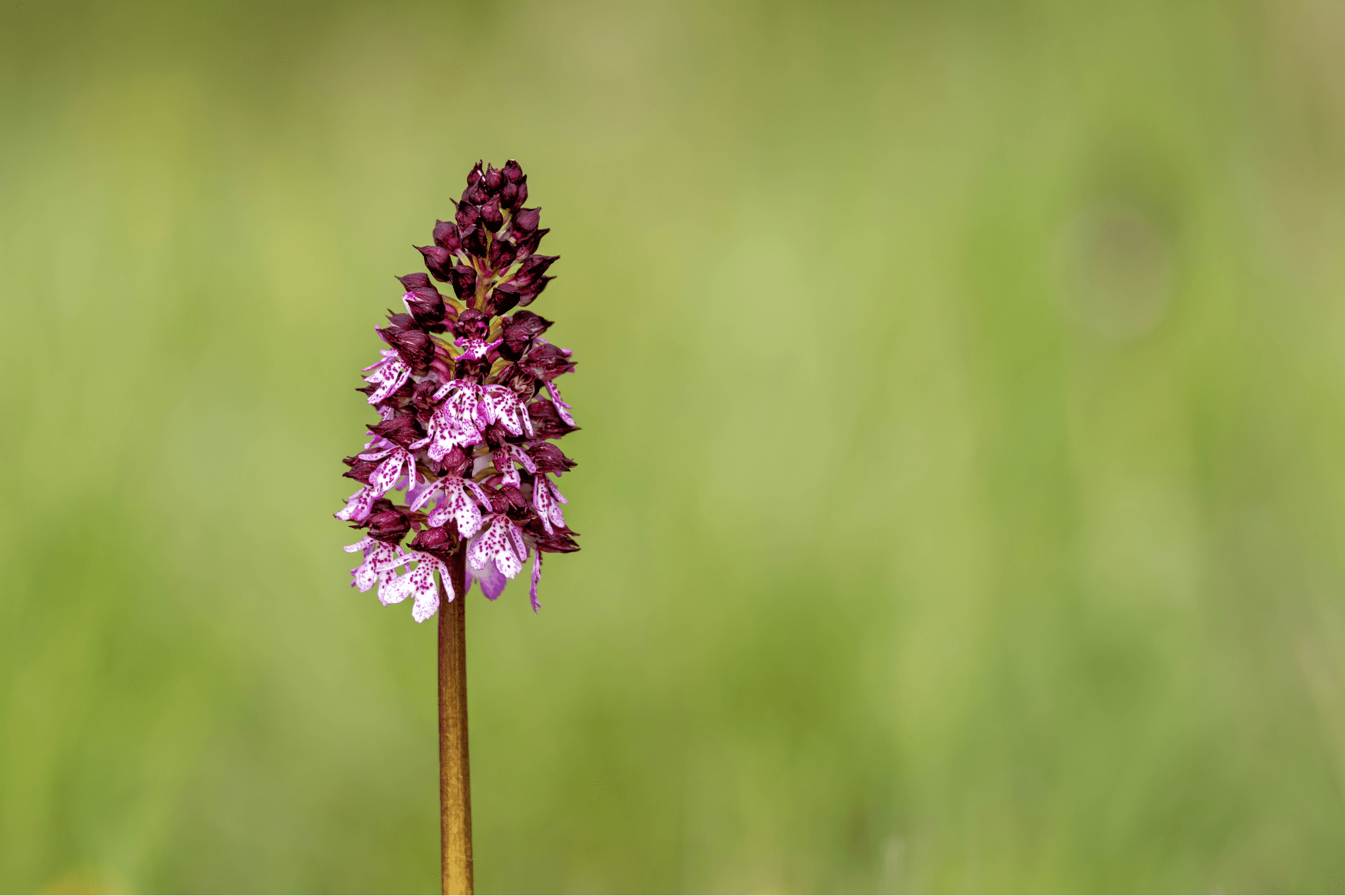
White helleborine
White helleborines typically bloom in late spring and are often found in shady woodland habitats, particularly on calcareous soils. This orchid develops up to 16 skyward-facing, creamy-white flowers that don’t fully open and self-pollinate. White helleborines can be found throughout southeast England and southeast Wales, but they’re not widespread, possibly due to habitat loss. Visit your local beech woodland for the best chance of spotting these subtle blooms. They tend to grow singularly or in small groups.
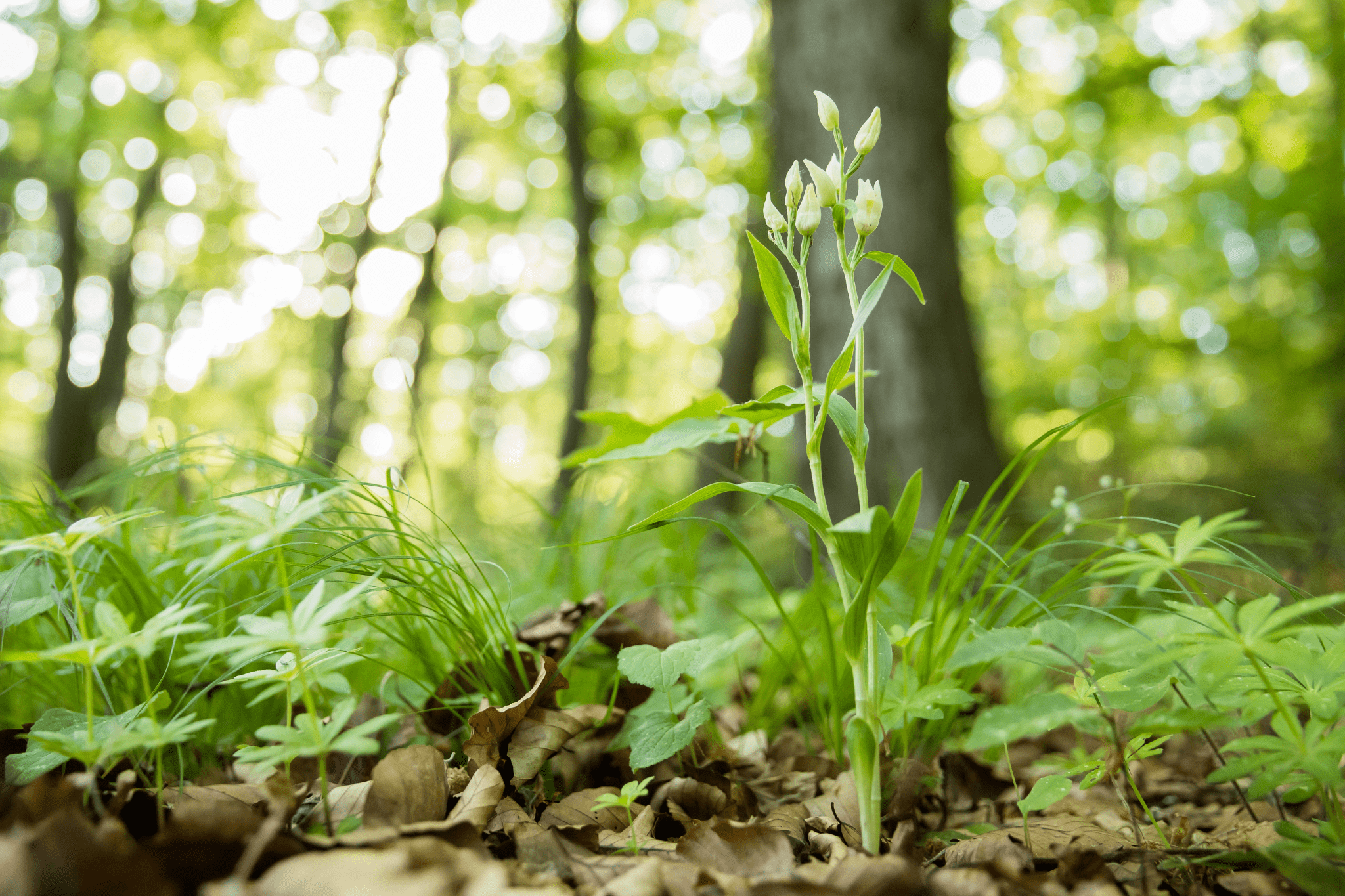
Monkey orchid
The monkey orchid is a wild orchid species native to Europe. In the UK, the monkey orchid is very rare and is found in only a few select locations in southern England. It gets its common name from the shape of the flower, which resembles a monkey hanging by its hands and feet. The flowers are pinkish purple in colour and have an unusual hairy or furry appearance due to long papillae (hair-like projections) on the sepals and petals. The monkey orchid prefers sparsely vegetated chalk and limestone grasslands, which are habitats that have become increasingly fragmented in Kent over time. The best place to look for these orchids is Park Gate Down reserve near Elham.
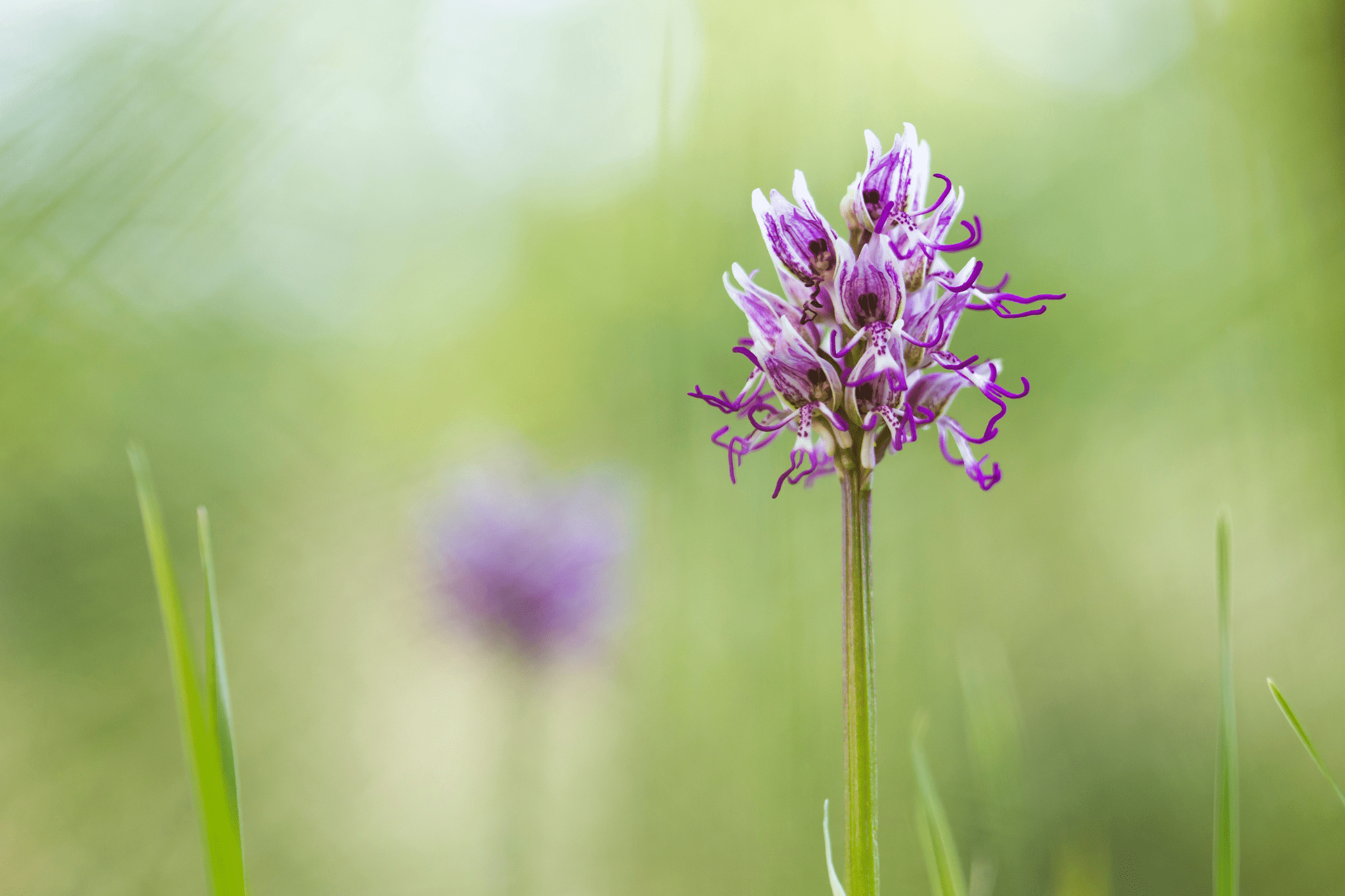
Respect, Protect, Enjoy
Kent’s orchids, like many species, are under grave threat from habitat loss, biodiversity decline, climate change, and other human impacts. These delicate wildflowers represent some of our most botanically precious natural heritage.
Please take great care around orchids if you are fortunate enough to spot them in the wild:
- Stick firmly to designated paths and trails, as straying off them can inadvertently trample and crush the orchids, their symbiotic fungi partners in the soil, and their companion plant species.
- Do not get too close, as this can disturb the microhabitat and potentially expose the orchids to disease transmission.
- Most importantly, never pick or collect any orchids from the wild – this is illegal for some species and only hastens their decline. Simply appreciate their beauty from a respectful distance.
You can help conserve Kent’s rare orchids by supporting organisations like Plantlife, the Kent Wildlife Trust, and others working to study, monitor, and protect orchid populations along with their fragile grassland and woodland habitats. Share your sightings with conservation groups to aid research. By taking a hands-off, observation-only approach when orchid-spotting and supporting conservation efforts, you allow these living marvels to persist for future generations.
Popular articles
The Best Viewpoints in the Kent Downs
Searching for incredible views? Look no further! We've rounded up the best…
Top 5 bluebell walks in the Kent Downs
If you're looking for inspiration on the best places for some bluebell…
Samuel Palmer: Visionary Landscapes Exhibition
Samuel Palmer: Visionary Landscapes is a new touring art exhibition showcasing the…
